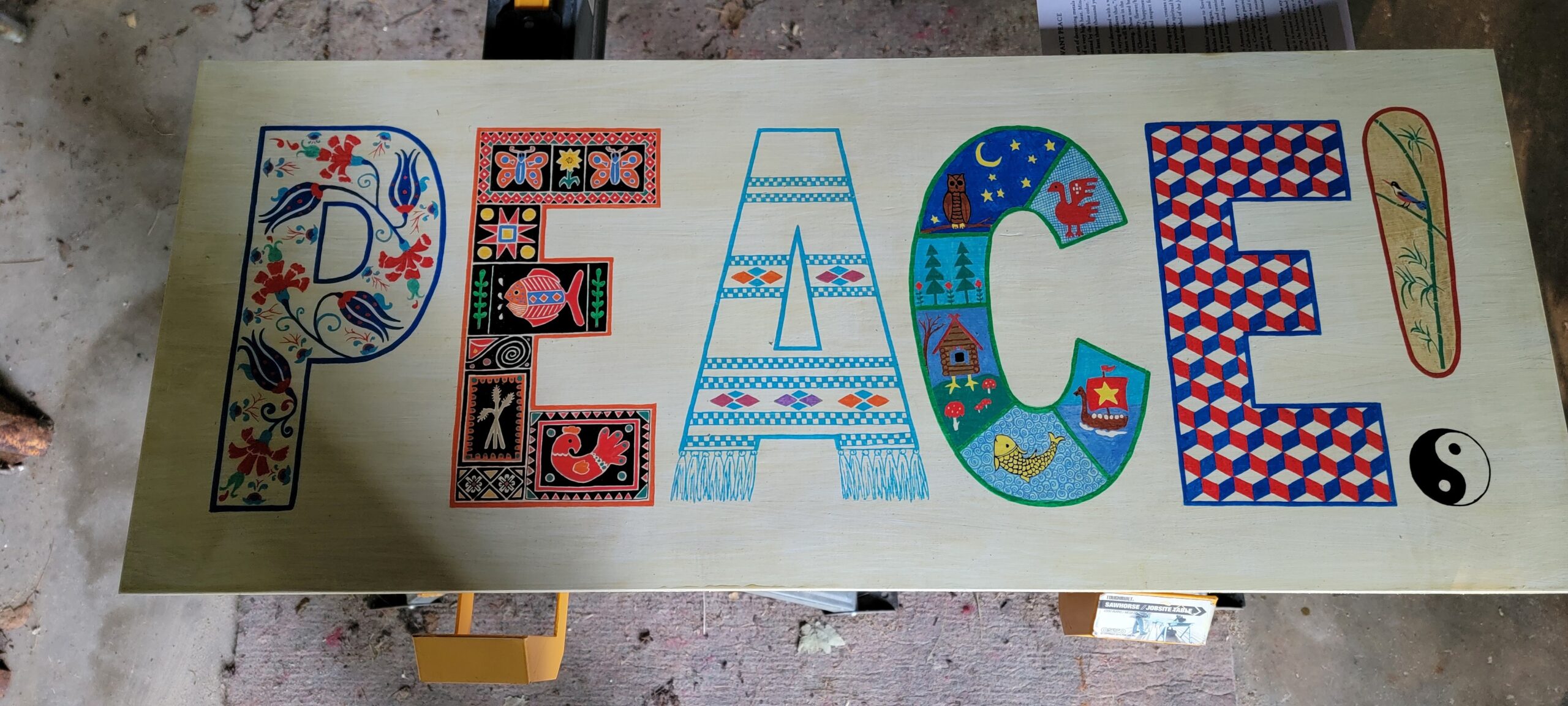
P – Persian minakari is the art of decorating metals and ceramics with a glaze that is fired at very high heat. “Mina” means “heaven” in Persian, and is represented by the blue color. This art form has been practiced for at least 3,000 years.
E – Ukrainian pysanky eggs are decorated with a wax-resist method. An old Ukrainian saying declares that, “As long as people paint pysanky, there will be love in the world.” Each element and color has meaning. Those used here are: butterflies (angels), fish (Christianity), flower (beauty and love), wheat (good health and harvest), red (happiness and hope), and black (darkest time before dawn and respect for the dead).
A – A Jewish shawl, worn during prayer, creates a sense of personal space and provides a portable spiritual home. Called a “tallit,” it has become an iconic symbol of the Jewish people.
C – Russian artist Ivan Bilibins’ response to Soviet authoritarianism was to collect folktales and designs, and peasant perspectives. He used his art to encourage and remind the Russian people of their strength and longstanding traditions.
E – Early homesteaders in America saved every scrap of cloth to make quilts. President Calvin Coolidge pieced a tumbling blocks quilt top at age 14. Coolidge once said that, “The government of the United States is a device for maintaining in perpetuity the rights of the people, with the ultimate extinction of all privileged classes.”
! – The top of the exclamation point is in the style of traditional Chinese brush painting; it is meant to embody the inner spirit, with bamboo symbolizing the balanced way of an upright humble life. The kingfisher symbolizes peace. The bottom is a rendering of the ancient Taoist yin-yang symbol for harmony and the enduring dynamic balance between all things, such as light/dark, male/female, and heaven/earth.
Written and designed by Willow Bascom
Plymouth, Vt.